Imagine cutting hours of classroom tasks while fostering open communication and collaboration among teachers and students. For educators at Chagrin Falls Exempted Village Schools, this isn’t a distant future—it’s a present-day reality. By integrating AI into their workflows, they have streamlined grading, lesson planning, and communication, allowing teachers to be more efficient and collaborative.
At Panorama’s AIM FOR IMPACT Virtual Summit, Mike Daugherty, Assistant Superintendent of Innovation, Technology, and Communications, and Molly Klodor, Instructional Technology Coach, shared how their district is leveraging AI thoughtfully and responsibly. Their insights offer a roadmap for schools looking to maximize AI’s benefits while maintaining transparency and trust.
|
Did you miss the AIM FOR IMPACT Virtual Summit? No problem—you can now watch on-demand! Hear from education experts and district leaders, explore solutions to today’s K-12 challenges, and gain strategies for student success and a strong school culture. Learn how AI is helping to build future-ready schools. |
The Challenge: Overworked Teachers, Limited Time
Teachers have long faced the challenge of balancing time-consuming administrative tasks with the time they want to spend teaching and supporting students. In fact, research shows that many educators spend nearly half their working hours on non-instructional tasks—time that could be better spent engaging with students.
This growing workload isn’t just a statistic—it’s a daily reality for educators, as echoed by Chagrin Falls' own leadership.
“We want to implement new initiatives and try new things, but there's just not enough time,” said Daugherty. “In fact, we did a survey in October, and it showed that workload was one of the biggest stressors on our teachers.”
Recognizing this challenge, Chagrin Falls began exploring new solutions—one of which was AI, a tool with the potential to ease workloads and give teachers more time to focus on what matters most: their students.
From AI Awareness to Action
Chagrin Falls’ AI journey started when Daugherty first encountered ChatGPT in 2022. As AI discussions gained momentum, some staff raised concerns about its impact—but district leaders took a proactive approach, focusing on teaching students and staff how to use AI responsibly.
They launched professional development sessions, starting with short workshops to spark interest, followed by full-day and half-day trainings. To encourage adoption, they created the AI in Action contest, where teachers logged AI use and reported time saved—and weekly incentives like prime parking spots kept engagement high.
By the 2023-2024 school year, AI was not just an idea—it was actively saving teachers time, improving communication, and enhancing instruction. At this stage, Chagrin Falls shifted into developing strategic professional development for staff to use AI effectively in the classroom.
The Chagrin Falls Approach to AI Implementation
Phase 1: Building AI Awareness and Confidence
To build comfort and curiosity, the district encouraged teachers to experiment with AI in both personal and professional settings.
“We really focused our professional development on encouraging teachers to try and play with AI themselves,” said Klodor. “If we could build that comfort, it would translate into teachers using it with their students.”
Workshops started with the basics: defining AI, explaining how it works, and discussing best practices for engaging with AI tools. Teachers learned foundational skills, including how to interact with AI effectively and how to use it to automate simple tasks.
These early sessions focused on building familiarity and confidence, allowing teachers to explore AI without pressure and see how it could fit into their daily work.
Phase 2: Collaborative Policy Development
Chagrin Falls took a collaborative approach to AI implementation, empowering teachers to help shape the district’s AI guidelines. By involving educators from the start, they ensured the policies were practical, teacher-informed, and aligned with real classroom needs—rather than imposed from the top down.
“In that early professional development, we worked a lot on having teachers help us build out our policies,” said Klodor. “Instead of us just coming out with policies, we asked our teachers over the summer to help craft what they wanted to see.”
Teachers discussed key concerns, including how AI should and shouldn’t be used in classrooms, academic integrity, and student guidance. The district gathered feedback through summer and refined policies based on teacher input.
The result was an AI policy shaped by teachers, allowing flexibility based on different comfort levels. Some educators were eager to integrate AI into their classrooms, while others were more hesitant. To accommodate this, the district developed multiple AI policy options for syllabi, giving teachers the ability to set clear expectations for AI use in their courses.
By creating policies with teachers rather than for them, Chagrin Falls built buy-in and trust, ensuring AI was implemented in a way that worked for both educators and students.
Phase 3: Training and Implementation
A major focus of the district’s training was helping educators use AI effectively while maintaining their personal teaching style.
“We wanted to encourage teachers not to just copy and paste whatever came out of the AI tool,” said Klodor. “AI will get you 80% of the way there, but you’re responsible for that other 20%—making adjustments so it still comes from you and your voice.”
To support this, the district provided ongoing training focused on practical applications of AI. Teachers learned how to:
-
Automate repetitive tasks to save time on lesson planning and assessment creation.
-
Enhance communication by drafting emails, newsletters, and classroom updates more efficiently.
-
Identify and address AI-generated bias, helping both educators and students use AI responsibly.
Additionally, the district emphasized that teachers should feel comfortable experimenting with AI, even if they weren’t experts. By providing structured training and encouraging open dialogue, Chagrin Falls ensured that AI was not just another tool—but a practical, teacher-driven resource that aligned with real classroom needs.
Phase 4: Engaging Students in AI Literacy
Chagrin Falls didn’t just stop with teachers—they also prepared students to engage critically with AI and use it responsibly in their academic and future career paths.
“We talked to students about how AI could be used appropriately in college and career settings,” said Klodor. “We also introduced a lesson on AI bias using image generators, embedding ethics discussions into existing coursework.”
Through hands-on activities, students explored AI in creative, ethical, and analytical ways:
-
Creative AI Applications – Students used AI-generated visuals, scripts, and voice tools to bring their projects to life. For example, students would write a script, then use an AI text-to-speech generator to create a podcast.
-
Ethical Considerations – Students examined bias in AI tools and discussed responsible AI use.
-
Critical Thinking Skills – AI-assisted chat tools encouraged students to analyze and interpret rather than just retrieve answers.
Additionally, the district guided students in understanding AI’s role in their future, helping them recognize when and how to use AI as a support tool rather than a shortcut.
By incorporating AI into existing lessons and discussions, Chagrin Falls ensured that students weren’t just using AI—they were thinking critically about its impact and applications in the real world.
How AI Transformed Data Analysis
One of the most powerful and time-saving applications of AI at Chagrin Falls has been in data analysis. “We used AI to analyze data from a staff wellness survey,” said Daugherty. “It saved us a ton of time.”
AI-assisted analysis has been particularly useful in making sense of anonymous survey data. Instead of spending hours sorting through open-ended responses, teachers and administrators could quickly identify trends, key concerns, and areas for improvement.
“We really hope that AI can help our teachers do things like look at survey data, make an assessment about what that means, and then implement that in their classrooms,” said Klodor. “Manually, that would have taken 30 minutes to an hour—AI trims off that time so they can focus on their students.”
By integrating AI into data-driven decision-making, Chagrin Falls has shifted the focus from data collection to meaningful action, ensuring that insights lead to real improvements in classrooms and beyond.
Building a Culture of Trust Around AI
AI adoption at Chagrin Falls thrived because of a culture of trust—where educators and students were encouraged to experiment, learn, and adapt together. Rather than imposing rigid rules, administrators engaged teachers in shaping AI policies, creating a safe space for trial and error.
“We talked a lot about how there are going to be times where AI won’t do exactly what you expect—and that’s okay. We’re all learning. It’s okay to make mistakes,” said Daugherty. “In fact, we want you to share those mistakes with us so we can help guide others.”
This openness extended to students, who participated in lessons on ethical AI use, bias awareness, and responsible research. By normalizing AI experimentation, Chagrin Falls made AI an approachable tool—one that empowers rather than disrupts.
The Results: Saving Time, Strengthening Teaching
Through AI integration, Chagrin Falls saved an estimated 350 hours in the 2023–2024 school year. But the benefits went beyond just time savings—teachers reported feeling more creative, more engaged, and more empowered in their teaching.
Chagrin Falls’ success demonstrates that AI isn’t here to replace teachers—it’s here to support them. With thoughtful implementation, professional development, and teacher-driven policies, schools can use AI to reduce stress, improve efficiency, and ultimately create more meaningful learning experiences for students.
Next Step: Bringing AI to Your District
Chagrin Falls’ success shows that when trust, transparency, and collaboration lead the way, AI becomes a practical, time-saving tool for educators. With the right approach, districts can use AI to streamline workloads, support students, and drive impact—all while keeping educators at the center.
Ready to see what AI can do for your district? Watch an on-demand demo of Panorama Solara and discover how AI can streamline teaching, enhance student support, and give educators more time to focus on what matters most.
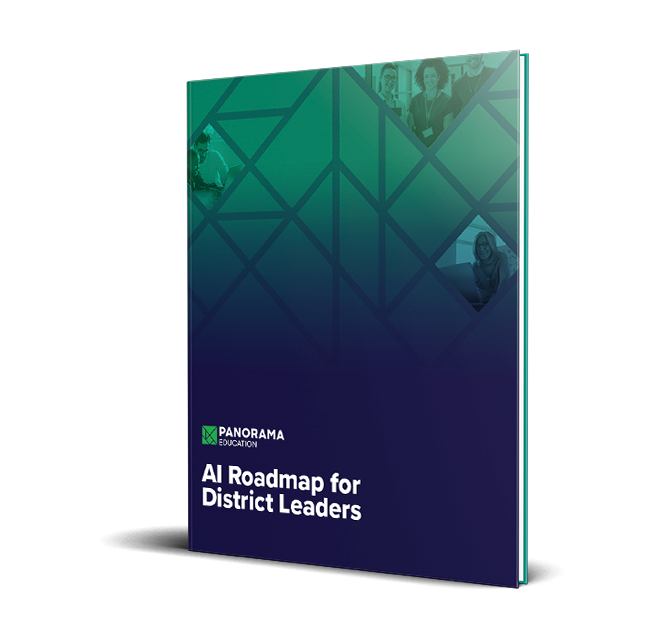


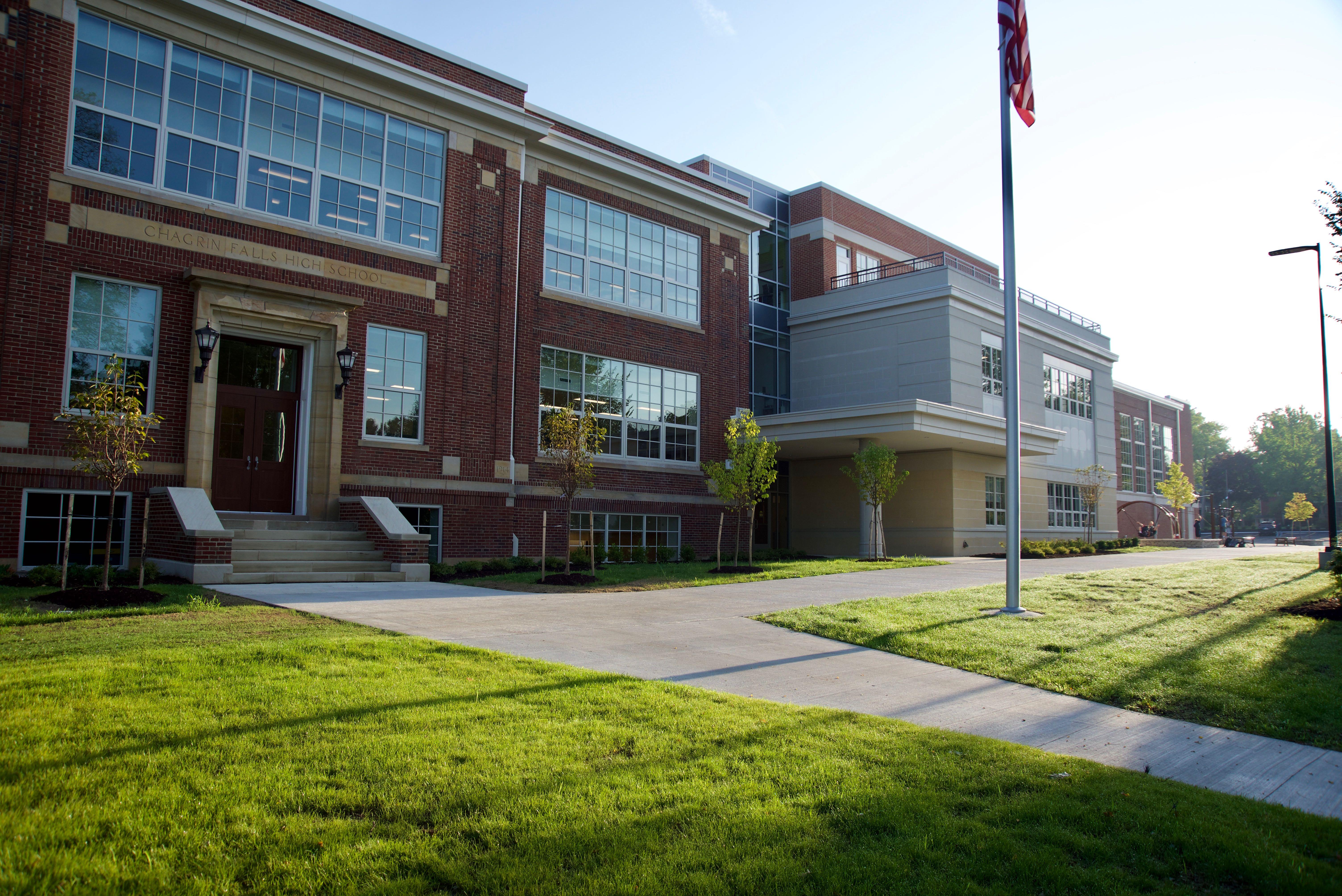

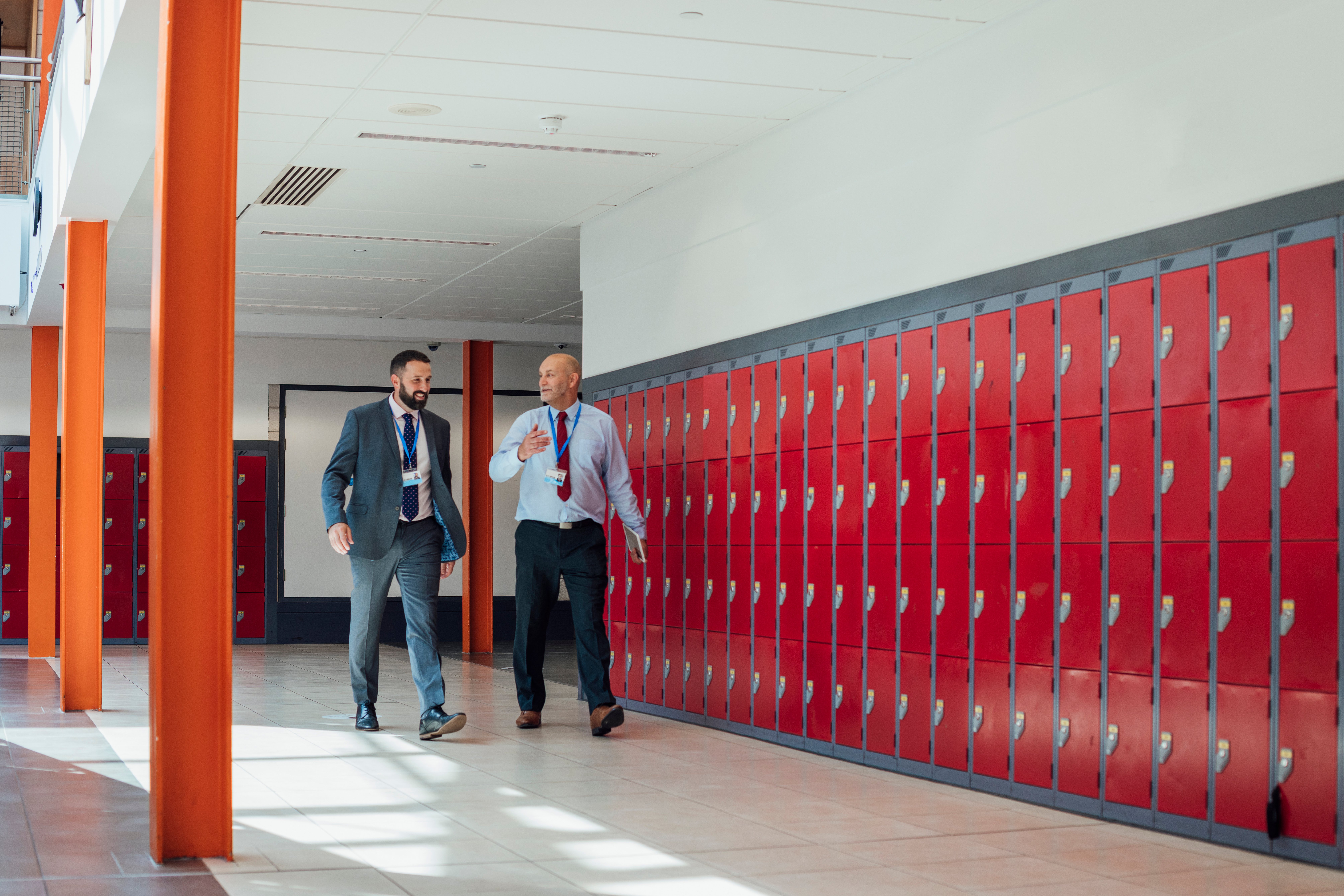


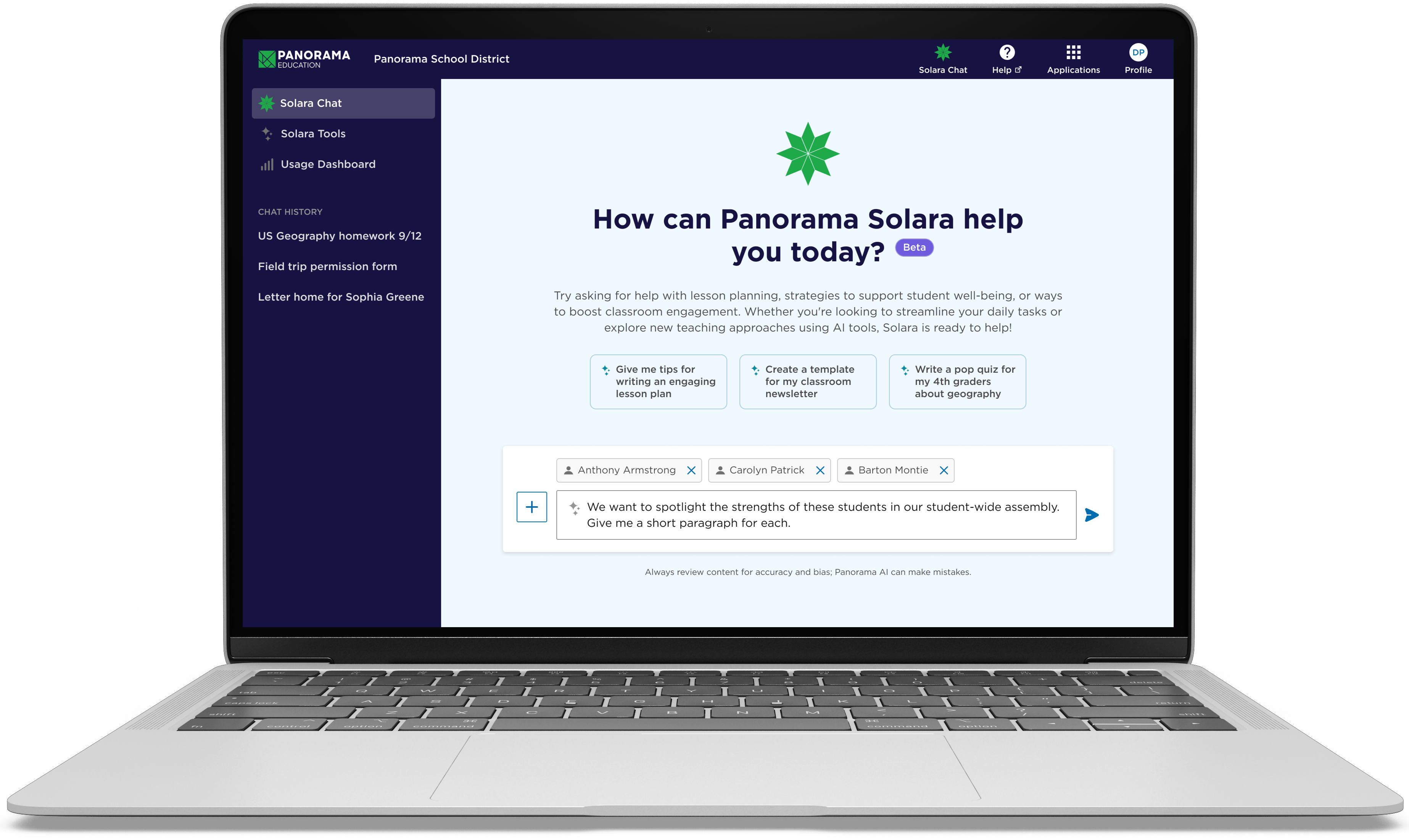
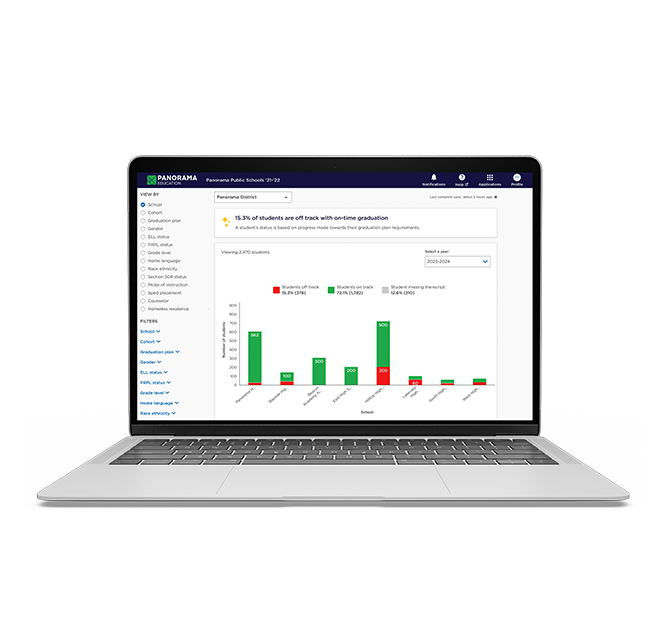
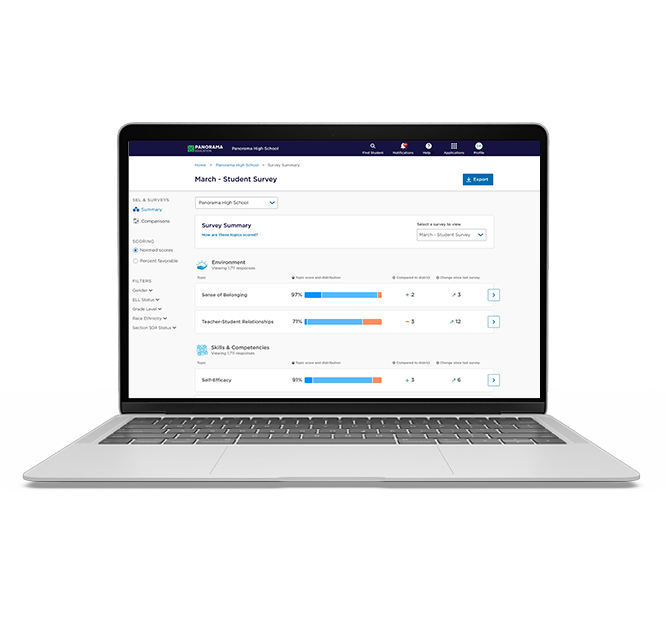
![How AI Ready Is Your District? [Infographic]](https://www.panoramaed.com/hubfs/iStock-1912513615.jpg)